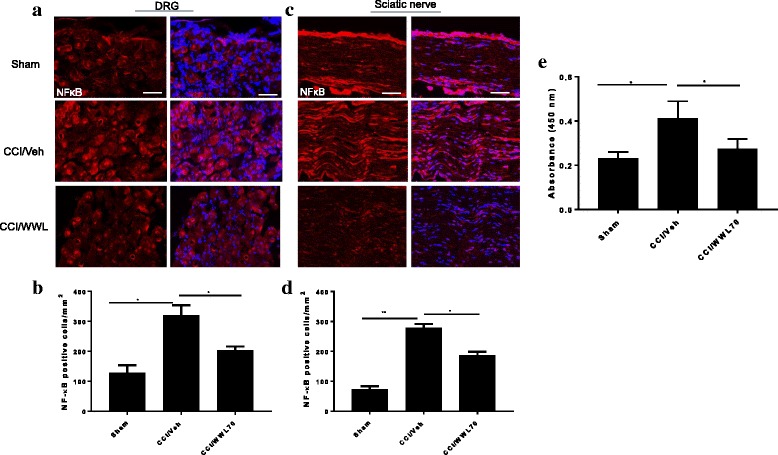Fig. 8.

Treatment with WWL70 attenuated the phosphorylation of NF-κB in DRG and sciatic nerve of CCI mice and reduced NF-κB DNA binding activity in the lumbar spinal cord dorsal horn of CCI mice. The activation of NF-κB was detected by immunofluorescence staining with an antibody against phosphorylated NF-κB in ipsilateral DRG and sciatic nerve from CCI mice 7 days after surgery. Positive phosphorylated NF-kB staining in DRG (a) and sciatic nerve (c) was significantly greater than that in the sham group and dramatically reduced by WWL70 (10 mg/kg) treatment. The quantitation of NF-kB-positive stained cells was shown (b, d). *p < 0.05 and **p < 0.01 CCI/vehicle compared to the sham or CCI/WWL70-treated group (mean ± S.E.M., n = 8). Scale bar = 50 μm. Nuclear extract from the lumbar spinal cord dorsal horn of CCI mice was assessed for NF-κB DNA binding with a non-radioactive ELISA assay (e). Absorbance at 450 nm indicated that the activity of NF-κB in the sham group was smaller than that in the CCI/vehicle group. (*p < 0.05; mean ± S.E.M., n = 5/group). The O.D. value in the WWL70 treatment group was also significantly reduced when compared to the CCI/vehicle group. (*p < 0.05; mean ± S.E.M., n = 5/group)
